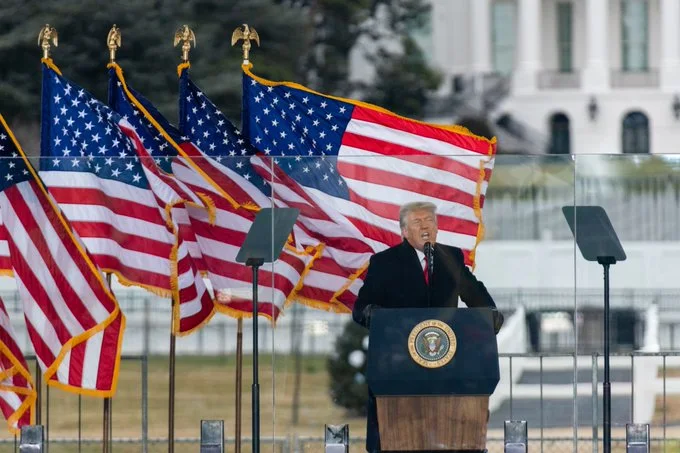Trump Administration Rolls Back Biden and Obama Cybersecurity Policies: What It Means for AI, Digital ID, and National Security
Looking for clarity on Trump's new executive order on cybersecurity and what it changes about Biden and Obama’s digital policies? Here’s what you need to know. On June 7, 2025, President Donald Trump signed a sweeping executive order that dismantles several cybersecurity mandates issued by former Presidents Joe Biden and Barack Obama. The order eliminates digital identity provisions, halts quantum-resistant encryption adoption, and shifts focus away from AI safeguards—signaling a significant pivot in U.S. federal cybersecurity priorities. With growing concerns over digital threats, national security risks, and federal technology compliance, this new direction could reshape how agencies respond to cyberattacks in 2025 and beyond.
Image Credits:Eric Lee/Bloomberg / Getty ImagesThe most controversial change targets Biden’s Executive Order 14144, which encouraged federal agencies to accept digital identity documents when administering public benefits. The Trump administration labeled this approach a security risk, claiming it could allow unauthorized access to government programs. The White House asserted that digital IDs could “enable illegal immigrants to improperly access public benefits,” making immigration a focal point in a debate that began as a cybersecurity conversation.
Policy experts, however, challenge that claim. Mark Montgomery, senior director at the Center on Cyber and Technology Innovation, criticized the order, warning that the government is “prioritizing questionable immigration narratives over proven cybersecurity enhancements.” By revoking support for digital identity adoption, the administration may be undermining secure, modern methods of identity verification that could enhance fraud detection and improve citizen access to services.
Another major rollback centers around the use of artificial intelligence in national defense and cybersecurity. Biden’s directives had included AI testing for securing energy infrastructure, funding federal AI research programs, and requiring the Department of Defense to integrate AI-driven threat detection models. Trump's order eliminates those mandates entirely. According to the administration, this redirection is aimed at “identifying and managing vulnerabilities” instead of what they call “AI censorship”—a nod to ongoing concerns from some Silicon Valley influencers aligned with Trump about algorithmic bias and content moderation.
Security analysts argue that removing federal support for AI in cybersecurity not only weakens innovation but also hampers national cyber defense capabilities. With cyber threats to critical infrastructure increasing in frequency and sophistication, cutting off funding and directives for AI-based defense tools may reduce the government’s ability to respond effectively to emerging threats.
The executive order also strips away mandates for agencies to begin using quantum-resistant encryption—a vital tool as global actors, including China, accelerate their quantum computing research. Experts had praised Biden’s initiative to prepare federal systems for post-quantum threats. Trump's reversal delays U.S. readiness in the face of encryption-breaking technology that’s expected to disrupt digital security norms within the next decade.
Additionally, the order rolls back federal contractor requirements to attest to the security of their software products. Under Biden’s framework, this measure was intended to ensure stronger supply chain protections, especially in the wake of high-profile breaches like SolarWinds. By eliminating it, Trump removes a layer of accountability that cybersecurity professionals widely regarded as necessary for national resilience.
From a strategic standpoint, this executive order could reshape U.S. cybersecurity posture during a period when geopolitical threats, data privacy concerns, and software supply chain vulnerabilities dominate tech headlines. For sectors like federal contracting, IT compliance, cloud security, and AI governance, the rollback presents both regulatory relief and increased risks.
This shift may also affect the cyber insurance market, cybersecurity auditing practices, and enterprise software security certifications. As federal standards relax, private enterprises and cloud providers may need to tighten internal controls or adjust compliance programs to maintain high levels of cybersecurity assurance for clients and stakeholders.
In the broader tech ecosystem, industry leaders are now assessing how these changes will impact innovation funding, national cybersecurity budgets, and federal hiring for cyber-related roles. Some fear this rollback will send a chilling signal to companies developing next-gen cybersecurity solutions, particularly in AI risk mitigation, digital identity verification, and quantum encryption research.
Ultimately, this new executive order reveals a fundamental rethinking of how the Trump administration views the intersection of cybersecurity, immigration, digital privacy, and artificial intelligence. While the White House frames it as a simplification of federal cyber policy, critics argue it risks leaving critical systems exposed during a time of heightened digital threat landscapes.
Whether these changes strengthen national sovereignty or undermine future-forward tech policies remains to be seen. What is clear: the cybersecurity roadmap for 2025 just took a sharp new turn.


Post a Comment